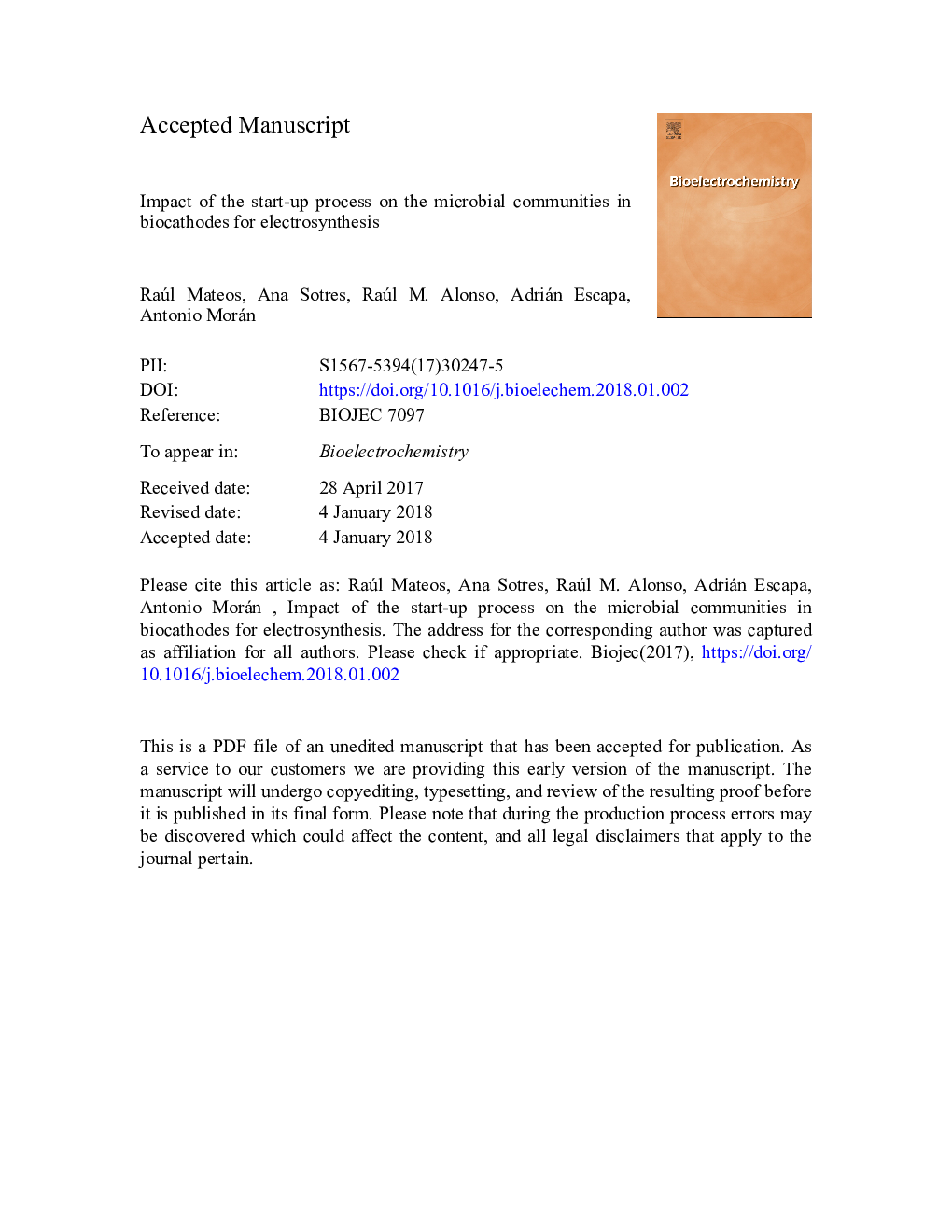| Article ID | Journal | Published Year | Pages | File Type |
|---|---|---|---|---|
| 7704640 | Bioelectrochemistry | 2018 | 30 Pages |
Abstract
Bacterial communities were analysed by means of high throughput sequencing. Possible syntrophic interactions and competitions between archaea and eubacteria were described together with a discussion of their potential role in product formation and current production. The results confirmed that reductive potentials lead to an inconsistent start-up procedure regardless of the inoculum used. However, imposing oxidative potentials help to quickly develop an electroactive biofilm ready to withstand reductive potentials (i.e. biocathodic operation). The microbial structure that finally developed on them was highly dependent on the raw community present in the inoculum. Using a non-specialised inoculum resulted in a highly specialised biofilm, which was accompanied by an improved performance in terms of consumed current and product generation. Interestingly, a much more specialised inoculum promoted a rediversification in the biofilm, with a lower general cell performance.
Keywords
Related Topics
Physical Sciences and Engineering
Chemistry
Electrochemistry
Authors
Raúl Mateos, Ana Sotres, Raúl M. Alonso, Adrián Escapa, Antonio Morán,
